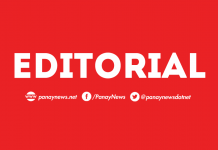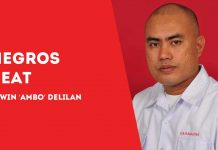
[av_one_full first min_height=” vertical_alignment=” space=” custom_margin=” margin=’0px’ padding=’0px’ border=” border_color=” radius=’0px’ background_color=” src=” background_position=’top left’ background_repeat=’no-repeat’ animation=”]
[av_heading heading=’ DREAM BIG ‘ tag=’h3′ style=’blockquote modern-quote’ size=” subheading_active=’subheading_below’ subheading_size=’15’ padding=’10’ color=” custom_font=”]
BY MANNY VILLAR
[/av_heading]
[av_textblock size=” font_color=” color=”]
An unrelenting war on drugs
WE HAVE known for a long time that the Philippines has a serious illegal drug problem, and that illegal drugs were mostly involved in brutal crimes even among family members.
In February 2015, the Philippine Drug Enforcement Agency (PDEA) reported that about 20.51 percent or 8,629 of the country’s 42,065 barangays had illegal drug problems.
A barangay is said to be drug-affected when there is a drug user, pusher, manufacturer, marijuana cultivator or other drug personality regardless of number in the area.
The extent and seriousness of the illegal drug problem came to surface when President Rodrigo Duterte launched a massive anti-illegal drug campaign. The results of the campaign showed why the chief executive was so aggressive in fighting illegal drugs, which he cited as one of the country’s major problems even during the campaign for the May 2016 elections.
Between June 2016 and July 2017, more than P18 billion worth of illegal drugs, including P12 billion worth of methamphetamine, commonly known as shabu, were seized by law enforcement agencies. These include 605 kilograms of high-grade methamphetamine worth P6 billion, which were seized last May following a tip from the Chinese government.
During the same period, the PDEA dismantled nine clandestine shabu laboratories (some located inside high-end subdivisions and others disguised as livestock farms).
Law enforcement agencies also arrested more than 90,000 people, including more than 300 government officials and employees, who were involved in the illegal drug trade.
The anti-illegal drug campaign also includes clearing of villages through the joint efforts of local government units, the police and the PDEA. By the end of June 2017, or a year after Duterte assumed office, the PDEA declared a total of 3,677 barangays as drug-free. In the first week of June, Batanes was declared as the country’s first drug-free province.
In a statement issued last June 30, the PDEA said the Inter-Agency Committee on Anti-Illegal Drugs chaired by the PDEA expects to clear 5,272 barangays before the end of 2017.
At this pace, ridding the country of illegal drugs in the next four years “is very much doable,” PDEA Director General Isidro S. Lapeña was quoted as saying in a news report.
The pace of the war on drugs will not slow down, based on President Duterte’s statements during his second State of the Nation Address last July 24. He said the “fight will be unremitting as it will be unrelenting.”
The President’s determination to eliminate the illegal drug problem is fueled by his commitment to protect Filipino families and the youth of the land. He pointed out that illegal drugs “weaken the social fabric and deter foreign investments from pouring in.”
The drug problem is still with us, but it is encouraging to hear people saying it is now safer to walk the streets at night. That, I think, is the best proof that the campaign against illegal drugs is working, for the benefit of ordinary Filipinos.
This piece first came out in Business Mirror on Aug. 7, 2017 under the column “The Entrepreneur.” For comments/feedback e-mail to: mbv.secretariat@gmail.com or visitwww.mannyvillar.com.ph./PN)
[/av_textblock]
[/av_one_full]



